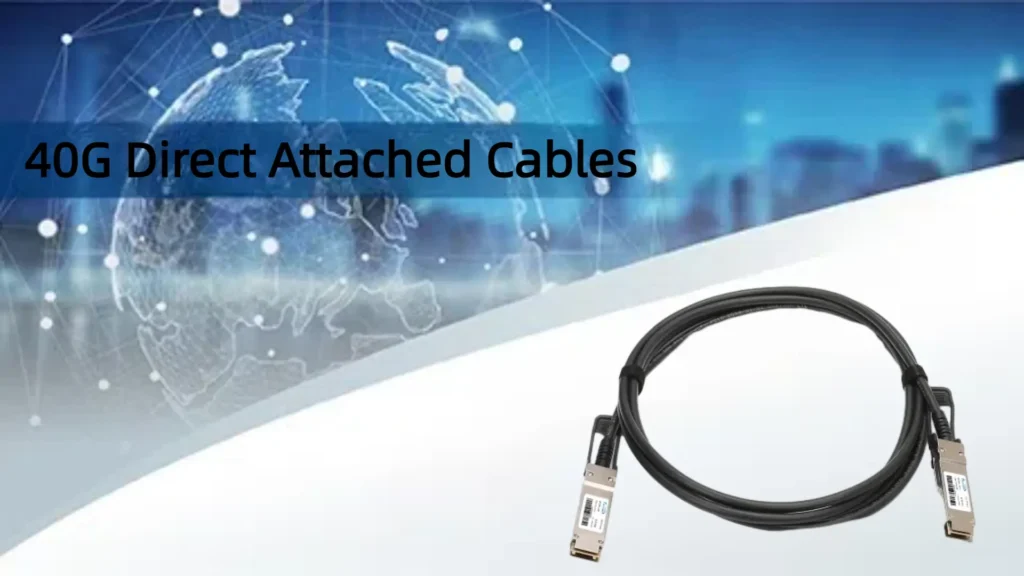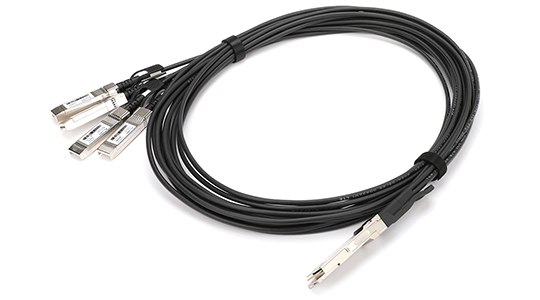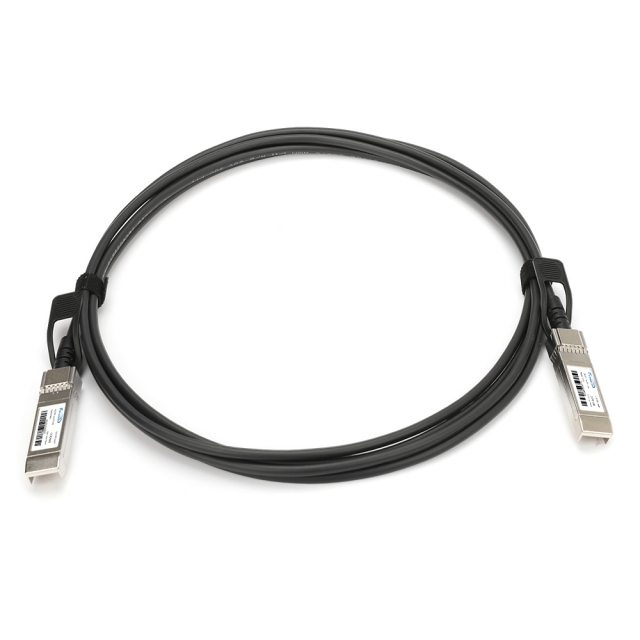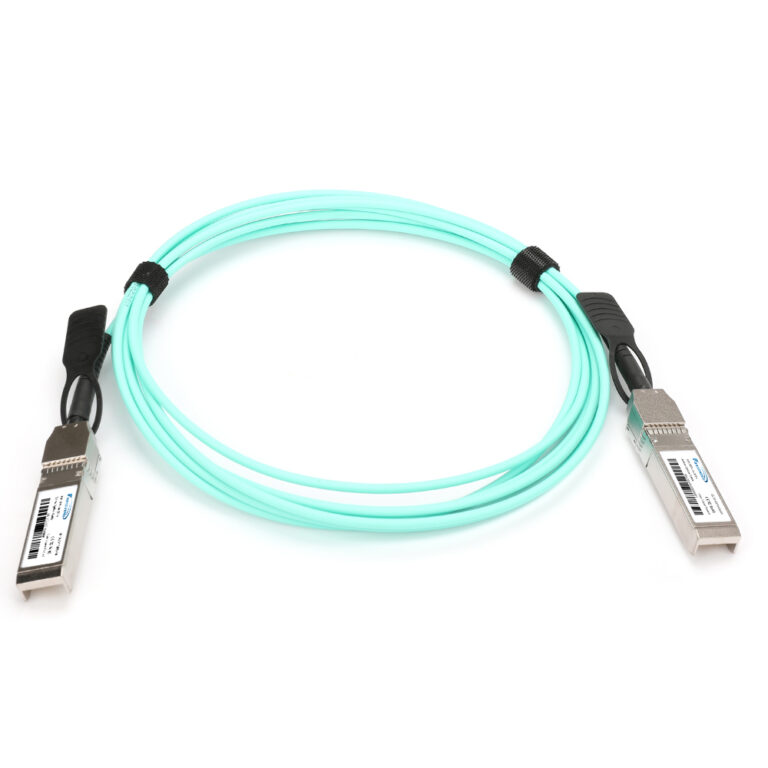40G QSFP+ DAC Cable | The Definitive Guide
Network architects and IT professionals demand high-performance, cost-effective cabling solutions that deliver low latency and power efficiency. Among these solutions, 40G DAC cables—also known as 40G direct attach cable assemblies—have emerged as a go-to choice for short-reach connections within data centers, enterprise LANs, and high-performance computing (HPC) clusters. This comprehensive guide covers everything you need to know about the 40G QSFP+ DAC cable, from their construction and benefits to key applications, selection tips, and frequently asked questions.
What Is a 40G QSFP+ DAC Cable?
A 40G QSFP+ DAC cable is a passive or active copper assembly that directly connects two QSFP+ ports without the need for separate transceivers. The “40G” designation indicates support for an aggregate data rate of 40 Gbps over four channels, each running at 10 Gbps. These 40G DAC cable assemblies come in two main variants:
Passive DAC Cables: Direct copper cables without active signal conditioning. Best suited for ultra-short reaches (up to 5 m), they offer the lowest cost and power consumption.
Active DAC Cables: Incorporate small electronic components to boost and reshape signals, enabling longer reaches (up to 7 m or more) while maintaining signal integrity.

Key Benefits
Cost Efficiency
Passive 40G DAC cables typically cost up to 60 % less than equivalent optical transceiver plus fiber assemblies, making them ideal for budget-conscious deployments.
Low Latency
Direct copper connections eliminate optical-electrical-optical (OEO) conversions, resulting in sub-microsecond latency—crucial for HPC and financial trading applications.
Power Savings
Without onboard lasers or optics, passive 40G QSFP+ DAC cables draw virtually no power, while active variants consume significantly less than standalone transceivers plus fiber.
Reliability and Simplicity
Fewer components translate to higher reliability and simpler maintenance. 40G direct attach cable assemblies are hot-pluggable and backward compatible with standard QSFP+ ports.
Common Applications
Data Center Switch-to-Switch Links
40G DAC cable assemblies provide a cost-effective backbone for top-of-rack (ToR) and end-of-row (EoR) switch uplinks, enabling seamless aggregation of 10 Gbps server connections into 40 Gbps trunks.
Server-to-Switch Connectivity
In high-density server environments, 40G QSFP+ DAC cables simplify rack cabling by directly linking server NICs to switch QSFP+ ports, reducing the need for messy fiber patch panels.
High-Performance Computing (HPC)
Clusters running MPI, InfiniBand, or RDMA protocols benefit from the ultra-low latency and high throughput of 40G DAC cables, boosting scientific simulations, AI training, and big data analytics.
Storage Area Networks (SANs)
SAN fabrics often use 40 G links to aggregate multiple 10 Gbps storage targets, providing high-speed, low-latency paths for iSCSI and Fibre Channel over Ethernet (FCoE) traffic via 40G direct attach cable assemblies.
Choosing the Right 40G DAC Cable
When selecting a 40G QSFP+ DAC cable or 40G DAC cable, consider the following factors:
| Factor | Consideration |
|---|---|
| Reach | Passive: up to 5 m; Active: up to 7 m or more |
| Cable Type | QSFP+ to QSFP+; 40G QSFP+ to 4x SFP+ Breakout DAC Cable |
| Cable Gauge | 30 AWG (thinner, more flexible) vs. 24 AWG (thicker, longer reach) |
| Power Budget | Passive: negligible; Active: 0.8–1.5 W per end |
| Environmental Rating | Plenum vs. riser-rated jackets for compliance |
| Vendor Compatibility | Ensure the DAC is validated for your switch/NIC model |
40G QSFP+ to 4x SFP+ Breakout DAC Cable
When you need to split a single 40 Gbps link into multiple 10 Gbps connections, the 40G QSFP+ to 4x SFP+ Breakout DAC Cable is the ideal choice. This breakout cable plugs into a QSFP+ port on one end and fans out to four SFP+ connectors on the other, allowing:
Flexible Deployment: Connect one QSFP+ port to four separate SFP+-based devices (servers, storage arrays, switches).
Optimal Rack Density: Reduce cable clutter by combining four channels into a single, easy-to-manage assembly.
Cost-Effective Scaling: Eliminate the need for additional transceivers—simply deploy one breakout cable to achieve four 10 Gbps links.
Use cases include splitting a 40 GbE uplink to serve multiple 10 GbE servers or consolidating cabling in tight rack environments.

Installation Best Practices
Handle With Care
Avoid sharp bends—adhere to the minimum bend radius (usually 30 mm for 30 AWG).Maintain Proper Routing
Use cable management trays or Velcro straps to prevent strain and maintain airflow.Verify Link Integrity
Always test each link with vendor-supplied diagnostic tools or third-party testers after installation.Document Your Infrastructure
Label both ends of the cable with port and device information to simplify future troubleshooting.
Troubleshooting Tips
No Link Light: Check port compatibility, reseat the 40G DAC cable, and inspect for bent pins.
Intermittent Connectivity: Test for signal integrity issues; consider replacing a passive DAC with an active variant for marginal lengths.
Link Speed Mismatch: Ensure both ports support 40 Gbps operation and are configured for the same speed and duplex settings.
Environmental and Compliance Considerations
Plenum vs. Riser Cable: Choose plenum-rated jackets for air-handling spaces to meet fire codes.
RoHS and REACH: Verify your 40G QSFP+ DAC cable assemblies comply with environmental regulations restricting hazardous substances.
Data Center Standards: Align cabling choices with TIA/EIA-942 or your regional data center guidelines for scalability and safety.
40G AOC Cables vs 40G DAC Cables:
To help you choose the best short-reach interconnect solution, the table below compares 40G QSFP+ DAC cables with 40G AOC cables across key parameters:
| Feature | 40G QSFP+ DAC cable | 40G AOC cables |
|---|---|---|
| Medium | Copper | Fiber optic |
| Maximum Reach | Passive: up to 5 m; Active: up to 7 m | Typically 1 m to 100 m (custom lengths available) |
| Power Consumption | Passive: ~0 W; Active: 0.8–1.5 W per end | ~1–2 W per end |
| Cost | Lowest-cost option for ≤7 m runs | Higher cost due to optical components |
| Flexibility & Weight | Thicker and heavier; limited bend radius | Thin, lightweight; tighter bend radius |
| EMI Susceptibility | Susceptible to electromagnetic interference (EMI) | Immune to EMI |
| Latency | Sub-microsecond (no OEO conversion) | Slightly higher due to OEO conversion |
| Typical Use Cases | Rack-to-rack, ToR/EoR switch uplinks, server links | Longer intra-rack links, hot aisles, plenum spaces |

FAQ About 40G Direct Attached Cables
Passive 40G DAC cables typically support lengths up to 5 meters. For longer runs (up to 7 m or beyond), active variants are recommended.
Yes—use the 40G QSFP+ to 4x SFP+ Breakout DAC Cable to split one 40 Gbps port into four 10 Gbps links.
Passive 40G direct attach cable assemblies rely solely on copper conductors and are cost-effective for short reaches, whereas active DACs include electronic drivers to extend reach and improve signal integrity.
Yes—QSFP+ DAC cables are hot-pluggable, allowing for quick swaps and upgrades without shutting down network devices.
Conclusion
40G DAC cables represent a cornerstone of modern data center cabling, offering unbeatable cost, power, and performance advantages for short-reach interconnects. Whether you’re deploying high-density switch uplinks, server-to-switch links, or HPC fabric connections, understanding the nuances of passive versus active 40G QSFP+ DAC cable assemblies, proper installation, and environmental compliance will ensure a robust, scalable network infrastructure. By following this guide—leveraging best practices in selection, installation, troubleshooting, and SEO optimization—you can confidently deploy 40G direct attach cable solutions that maximize ROI and support your organization’s growing bandwidth demands.




